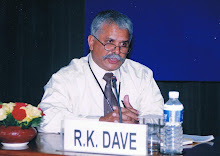J&K
Flood Management Operation-2
Planning
Recovery process (Reconstruction and Rehabilitation)
This is the second post
on J&K Flood management as my professional contribution at my personal
level to all those working in relief and recovery operation Jammu and Kashmir.
Post 1 was on the cleaning and other material people in affected area will need.
This post covers tips on planning for commencement of recovery process.
Recovery
(Rehabilitation and Reconstruction) process – Step 1
1. Planning and management of a survey to be conducted
to assess the damage
a)
Standards,
accepted definitions, documentation mechanisms and procedures for post disaster
data collection and damage assessment.
b)
Establishing
a building inspection procedure (e.g. using a standardized Rapid inspection
technique to assess the structure and recommend repairs / rebuilt) and a safe
Entry tagging system (i.e. no entry, Limited entry or safe entry) for buildings
can facilitate reoccupation.
c)
Involve
community / volunteers to collect data on damage in standard format.
d)
Data
collection teams should be created at Panchayat level (a team under each Panchayat)
in village and Municipal Corporation should handle (number of team based on
number of wards) it in the urban areas.
2. Planning and Management of Rehabilitation and Reconstruction – Step 2
a)
Analysis
of damage assessment survey and identify resource needs for rehabilitation and
reconstruction.
b)
Providing
services such as reconstruction planning, building design and expert advisory,
construction and supervision services;
c)
Building
and repairing residential buildings and public service facilities such as
schools, hospitals, broadcasting and television facilities, and cultural,
sports and welfare facilities;
d)
Building
and repairing infrastructures for services such as roads, water and gas supply,
drainage, sewage and garbage disposal;
e)
Building
and repairing the agricultural infrastructure and providing agricultural
technical services;
f)
Providing
machinery, tools, equipment, building materials and other support goods;
g)
The
locally existing ecologically friendly materials should be made use of. All the
available local resources, local talents, subsidies under various schemes of
the governments should be made use of like Nehru Rojgar Yojana, Indira Gandhi
Awas Yojna etc.
h)
Providing
personnel, organizing training and assisting in the provision of human
resources and in job placement;
i)
Encouraging
investments in industrial and commercial service facilities and in commercial
infrastructure development.
j)
While
rehabilitating people living on the dwellings on encroached land in river
inundation area people would be shifted to safer places and permanent houses
provided in such new and safe areas. In such circumstances, it is necessary to
ensure that the new allotment of house sites is registered in the name of
women. Involve community while taking such decisions which support gender
issues and women empowerment.
I
hope donors and administration would find above inputs useful in pro-active planning. For any questions
- author can be reached at roopdave@yahoo.com.



Dear Sir,
ReplyDeleteVery useful inputs especially for beginners in understanding data collection for survey of damage assessment.
Thank you and regards
Gp Capt Shajahan